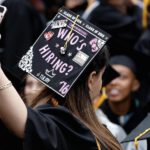A new White House report underscores Hawaii statistics that show mistreatment of students by their peers.
By By Chad Blair
Honolulu Civil Beat, August 24, 2016 —
www.sites.ed.gov/aapi/files/2015/02/AAPI-Bullying-Prevention-Task-Force-Report-2014-2016.pdf
Students told to “go back to their country.”
Others mocked for their facial features, physical stature, skin color, hair and style of dress.
Peers — and even some teachers — mistreating some students based on stereotypes.
Recently arrived immigrants not fluent in English bullied for “being too Asian.”
Those are just some of the many experiences chronicled in a new report from a White House task force focused on preventing bullying of Asian-Americans and Pacific Islanders.
The report released this month is based on surveys with 30 organizations, including student and youth groups, domestic violence shelters and mental health advocacy groups.

President Obama meting with Asian-American and Pacific Islander leaders. The White House
The survey also involved listening sessions in 29 cities big and small, including Los Angeles, New York, Chicago and Des Moines, Iowa.
Hawaii was not included, but the findings dovetail with local data compiled by the Hawaii Department of Education.
For example, 19 percent of Native Hawaiians and 17 percent of Filipinos in Hawaii high schools in 2015 said they had been bullied. The numbers for those same groups more than doubled in middle schools.
More than 60 percent of Hawaiians and Filipinos in middle school in 2015 agreed that harassment and bullying was a problem at school, according to the state according to the state Department of Education. (More than 50 percent of white students said the same.)
Hawaii has a diverse student population, with Hawaiians (26 percent) and Filipinos (22.1 percent) comprising nearly half of all K-12 students. Other groups include whites (17 percent), Japanese (9.1 percent), Micronesian (4.2 percent), Samoan (3.4 percent) and Chinese (3.1 percent).

The highest concentrations of Asian American and Pacific Island (AAPI) residents are in the West and Northeast. The White House
“Every day, kids of all ages experience bullying in schools across the country,” stated Doua Thor, the executive director of the White House Initiative on Asian Americans and Pacific Islanders.
“In the Asian American and Pacific Islander community, this problem is often compounded by cultural, religious, and linguistic barriers that can make it harder for AAPI youth to seek and receive help.”
Thor added, “Anecdotal evidence has shown that certain AAPI groups – including South Asian, Muslim, Sikh, Micronesian, LGBT, immigrant, and limited English proficient youth – are more likely to be the targets of bullying. And in some areas, bullying of AAPI students can be shockingly common.”
High LGBT Suicide Rates
Camaron Miyamoto, director of the LGBTQ Center at the University of Hawaii Manoa, has worked with the White House group on lesbian, gay, bisexual and transgender-related bullying of Asian-American and Pacific Island students.
“The bullying of Asian-Americans in Hawaii, specifically around Polynesians, Native Hawaiians and LGBT individuals, is on the rise,” said Miyamoto. “We look at the data nationally and we see that Hawaii leads the way in suicide attempts among young people. Those are really daunting numbers that point to a need for increased services and intervention and advocacy.”
Miyamoto said he appreciated that the White House is taking such issues seriously, but worries it’s not enough to address the problem.
“I feel we are on the radar, but I feel like a lot more work needs to be done nationally and locally,” he said. “I look to the DOE and our education universities to lead the way in making sure that all of our students are safe.”

Donalyn Dela Cruz, director of the DOE’s Communications and Community Affairs Office, welcomed the White House involvement.
“Any type of thing that highlights bullying, those efforts are something that we are interested in because this is ongoing work,” she said. “There never is one way to do it. It’s a work in progress, and we want to make sure we are at the forefront of bullying efforts.”
“This means addressing everything from what would be considered physical aspects of bullying but also psychological,” Dela Cruz said. “It’s not only face to face — today we have to work with the social media world that some kids will take to.”
The DOE’s Anti-Bullying Work website states:
“The department is committed to providing a safe and enjoyable learning atmosphere for students, families and educators. We work to reduce bullying and cyberbullying by emphasizing a culture of respect, responsibility and resiliency, using a frame work of prevention, response and follow-up. We work with communities to promote understanding, and investigate incidents to ensure student safety.”
Dela Cruz said DOE efforts against bullying come from the department level, the complex level, the school level and from students themselves.
“It’s one thing for adults to say this is unacceptable, but it’s another thing when a student’s peer says it’s not acceptable and we are not going to allow this on our campus,” she said. “When students are empowered, we really support that.”
One avenue of empowerment comes from the DOE’s statewide E Ola Pono Campaign. (See a promotional video below). It involves student-led projects the department believe are the most effective at reducing harassment and bullying in schools.
An Executive Order
The White Houise initiative was established by President Barack Obama through executive order in 2009. It restored the White House Advisory Commission and Interagency Working Group to address issues concerning the Asian American and Pacific Island communities.
“The more than 16 million Asian Americans and Pacific Islanders across our country have helped build a strong and vibrant America.”
But the order also acknowledged challenges facing the population such as barriers to employment and workplace advancement.
Among the worrying statistics are lower college-enrollment rates for Pacific Islanders as compared with other ethnic groups. Only one in seven Native Hawaiians or Pacific Islanders have a college degree or higher.
The White House task force survey says that, of all students who reported being bullied at school during the 2012-2013 school year, “Asians reported the highest rate of bullying occurring in a classroom, hallway or stairwell compared to all other racial groups.”
Students also reported being bullied “in a bathroom or locker room, in the cafeteria, outside on school grounds, on a school bus, or somewhere else at school.”
Cyberbullying is said to occur more frequently among college students than among younger students. And, while social media platforms can offer “uplifting comments … there were many ignorant comments and instances of hate speech.”

The Hawaii DOE promotes anti-bullying programs and strategies at its facilities statewide. Cory Lum/Civil Beat
Several groups surveyed by the task force said Asian-American and Pacific Island students feel uncomfortable reporting bullying incidents because of shame, embarrassment, fear of retaliation or a sense that it won’t make a difference. One advocacy group said that showing weakness “is a no-no, it goes against the family mentality of ‘saving face.’”
As their numbers grow, bullying of Asian-Americans and Pacific Islanders is likely to increase.
They are now “the fastest growing racial group” in the United States, according to the initiative website, increasing more than four times as rapidly as the total U.S. population and “expected to double to more than 47 million by 2060.”
The website also reports, “More than one-quarter of students between the ages of 12 and 18 reported being bullied at school during the 2010-2011 school year — nearly 7 million students. Some Asian American and Pacific Islander students face bullying and harassment based on their immigration status, such as Micronesian students whose families have recently immigrated to the continent and Hawaii.”
The report includes a lengthy list of recommendations. They include establishing a “welcoming school climate that values cultural and linguistic diversity,” supporting peer-to-peer relationships to “promote inclusion” and “providing interpreters and translated documents in key languages.”
Some of the recommendations are already in place at Hawaii public schools.
The state DOE’s anti-bullying website states, “Bullying belongs to all of us. … Families, students, and communities have a role to play to adopt and promote a culture of respect, responsibility and resiliency.”
Chad Blair is a reporter for Civil Beat. You can reach him by email at cblair@civilbeat.org or follow him on Twitter at @chadblairCB.










